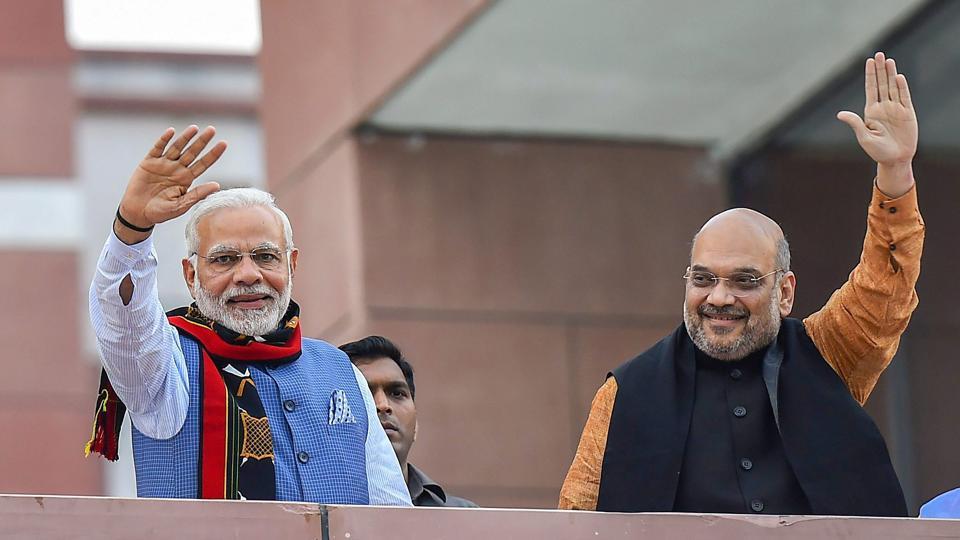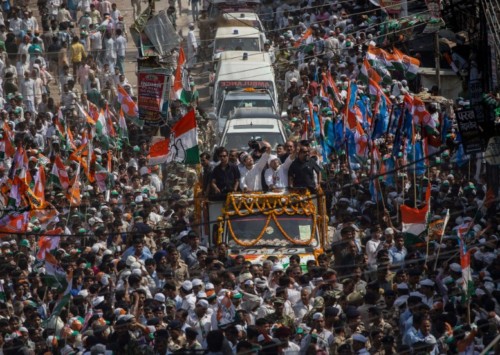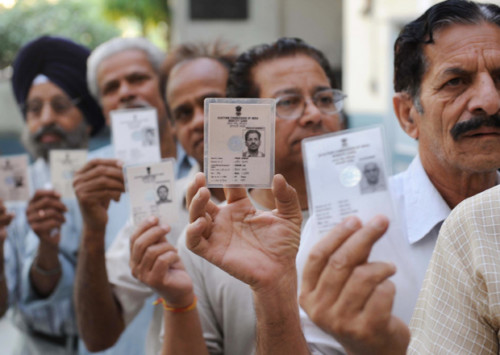The election fix
In the absence of pro-incumbency or anti-incumbency wave in India ahead of general elections, political alliances across the country will determine the outcome. Has the ruling Bharatiya Janata Party (BJP) led National Democratic Alliances (NDA) outsmarted the main opposition Congress in the game of uniting political allies?
Unlike the 2014 general elections, India’s political scape is neither reeling under pro-Modi wave nor strong anti incumbency against the ruling BJP-led alliance. The political mood is uncertain. While the ruling BJP is on a trail, the Congress is not a hot favourite for the voters either.
India’s lower house of Parliament- Lok Sabha has 545 seats. Of this the outcome in more than 300 odd seats will be determined on the basis of alliances that political parties are able to stitch together.
Interestingly the BJP-led NDA has outsmarted the Congress led UPA in stitching political alliances while the fledgling federal front that failed to take off.
Uttar Pradesh which sends 80 members of Parliament has been the key to Indian politics as it determines the future and scope of any government. The ruling BJP is in alliance with smaller parties such as the Apna Dal and the Suheldev Bharatiya Samaj Party (SBSP). Both of them gave tough time to BJP with their hard bargaining. The Congress which won merely two seats from the state is going solo in the polls. Traditional rivals the Samajwadi Party (SP), Bahujan Samaj Party (BSP) and the Rashtriya Lok Dal (RLD) have stitched up an alliance in the state. SP and BSP will contest on 37 and 38 seats respectively, while the RLD has been given three seats to contest from. Will the BJP be able to bag 71 seat as in 2014 is to be seen? In the latest development, the BJP has wooed the Nishad Party (NP), an outfit, that represented the fishermen and boatmen community is all set to join the NDA soon. Nishad Party is likely to be offered two Lok Sabha seats contests in the state.
Another political significant state is Bihar which sends half the number of MPs Uttar Pradesh sends to the Parliament. In fact this is where the ruling NDA first finalised its seat sharing. The BJP is contesting on 17 seats. Bihar chief minister Nitish Kumar’s Janata Dal (United) will also contest on 17 seats. The Lok Janshakti Party (LJP) of Ram Vilas Paswan will contest on the remaining six seats.
The elections of alliances
After much wrangling the dust settled on seat sharing among the grand alliance partners. The RJD is contesting 20 seats, the Congress is fighting on nine, the RLSP (Rashtriya Lok Samata Party) five seats, Hindustani Awam Morcha (S) and Vikashsheel Insaan Party (VIP) are three seats each. One seat has been offered to CPI-ML (liberation), a major Left force in Bihar, from the RJD’s own quota. The two national Left parties—CPI and CPM—have been left out. The stakes are higher for the Bharatiya Janata Party -led National Democratic Alliance which won 31 and 32 Lok Sabha seats out of the 40, in the 2014 and 2009 general elections, respectively.
In the neighbouring Jharkhand the BJP which is in alliance with All Jharkhand Students’ Union (AJSU) will contest 13 seats leaving one for the alliance partner. The Congress will contest on seven seats in alliance with Jharkhand Mukti Morcha (JMM), which will contest on four while the Jharkhand Vikas Morcha (JVM) and RJD have been given two and one seat each.
However, West Bengal will witness a four cornered contest for 42 Parliamentary constituencies. Contenders are Congress, Trinamool Congress, the Left and the BJP.
Maharashtra has second highest number of seats after Uttar Pradesh, at 48. Despite verbal duel for last several months the BJP and Shiv Sena have joined hands once again. BJP will contest on 25 seats while the Sena would be fielding candidates from 23 seats. The Congress and NCP would contest 24 and 20 seats respectively, with the Swabhimani Shetkari Sanghatana vying in two, and the Bahujan Vikas Aghadi and Independent MLA Ravi Rana’s front contesting one each. In 2014, the alliance of the BJP and the Shiv Sena swept the polls by winning 42 seats.
Another important state where the BJP has sealed an alliance is Tamil Nadu which is the bastion of dravidan politics with the ruling All India Anna Dravida Munnetra Kazhagam (AIADMK). The BJP will contest on five seats, the Pattali Makkal Katchi (PMK) will contest on seven while the Desiya Murpokku Dravida Kazhagam (DMDK) will contest on four seats. The rest 23 will be contested by the AIADMK. It is to be seen whether the AIADMK will be able to repeat its stupendous performance of 2014 when the party bagged 37 seats in the absence of late leader J Jayalalithaa. The Congress has tied up Dravida Munnetra Kazhagam to contest on nine seats and DMK on 20. The rest of the seats have been divided between other smaller allies.
In North East where the BJP is ruling eight states either on its own or in alliance is fighting a united battle against Congress in the Lok Sabha election. The saffron party will fight on ten seats leaving three seats for Assom Gona Parishad and one seat for Bodo People’s Front.
However, the BJP will also have to fight against its own partners in Meghalaya, Manipur, Nagaland, Mizoram, Arunachal Pradesh and Tripura. It remains to be seen how the north-eastern part of the country will be crucial in the run up to the formation of the government.













